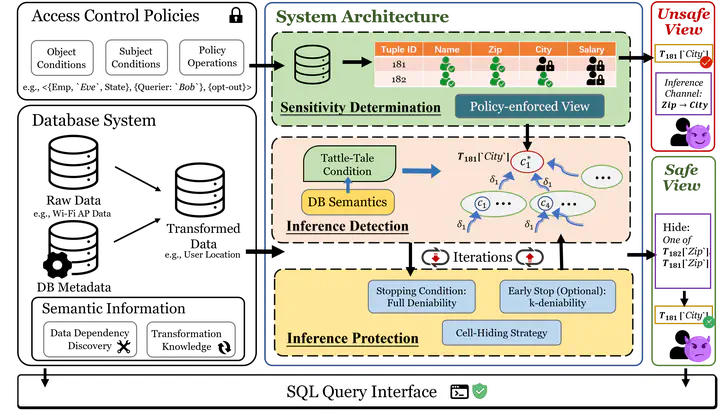Tattletale

Tattletale uses denial constraints to discovery data inferences inside of a database relative to sensitive cells. The cells that make up the denial constraints are then checked to see which cells infer information on them. In the end all the cells that infer data on the sensitive cells and the cells that could be used to reconstruct those inferences are placed into a list which is used to generate a view that does not contain those cells. Since inference can only be reconstructed as long as only one predicate is missing we can use that to minimize how many cells we have to hide. The benefit of Tattletale is that it provides protection against inference which access control lists don’t provide. The current challenge is trying to improve the run time performance and decrease the number of cells that have to be hidden while also guaranteeing a certain level of protection against reconstruction.Tattletale uses denial constraints to discovery data inferences inside of a database relative to sensitive cells. The cells that make up the denial constraints are then checked to see which cells infer information on them. In the end all the cells that infer data on the sensitive cells and the cells that could be used to reconstruct those inferences are placed into a list which is used to generate a view that does not contain those cells. Since inference can only be reconstructed as long as only one predicate is missing we can use that to minimize how many cells we have to hide. The benefit of Tattletale is that it provides protection against inference which access control lists don’t provide. The current challenge is trying to improve the run time performance and decrease the number of cells that have to be hidden while also guaranteeing a certain level of protection against reconstruction.